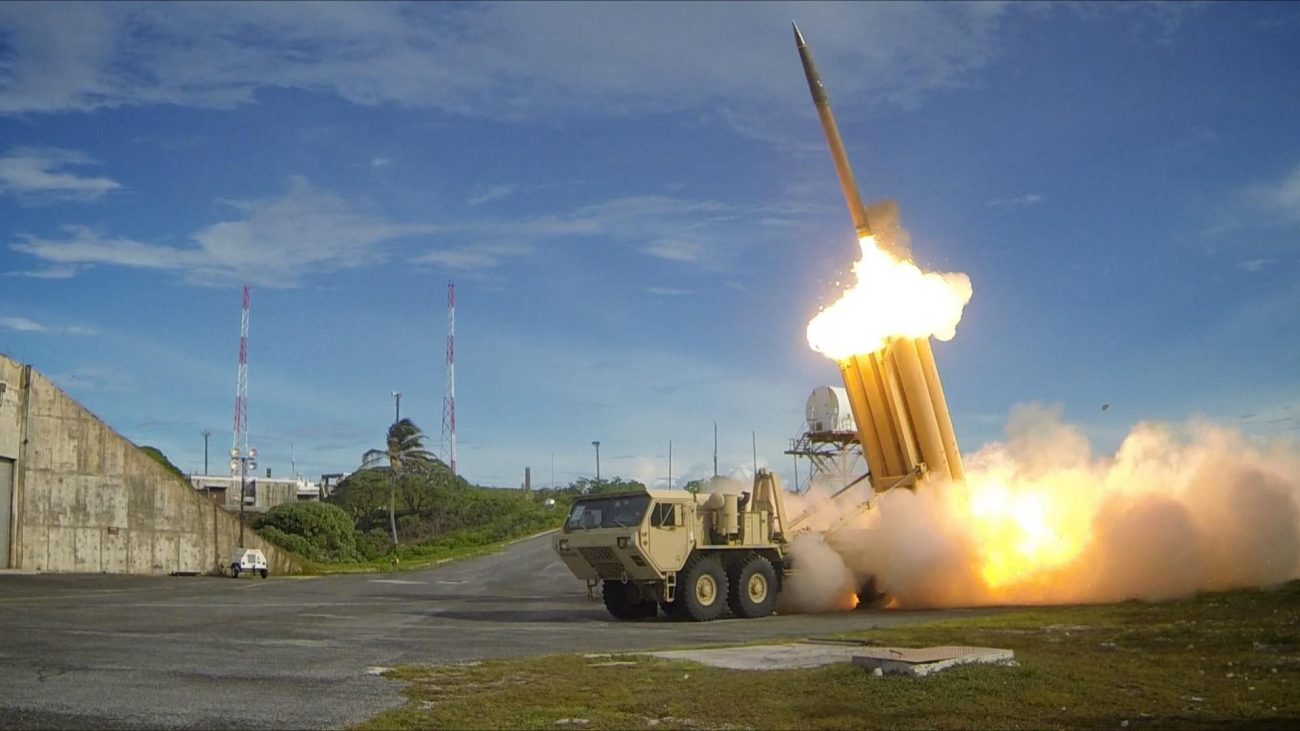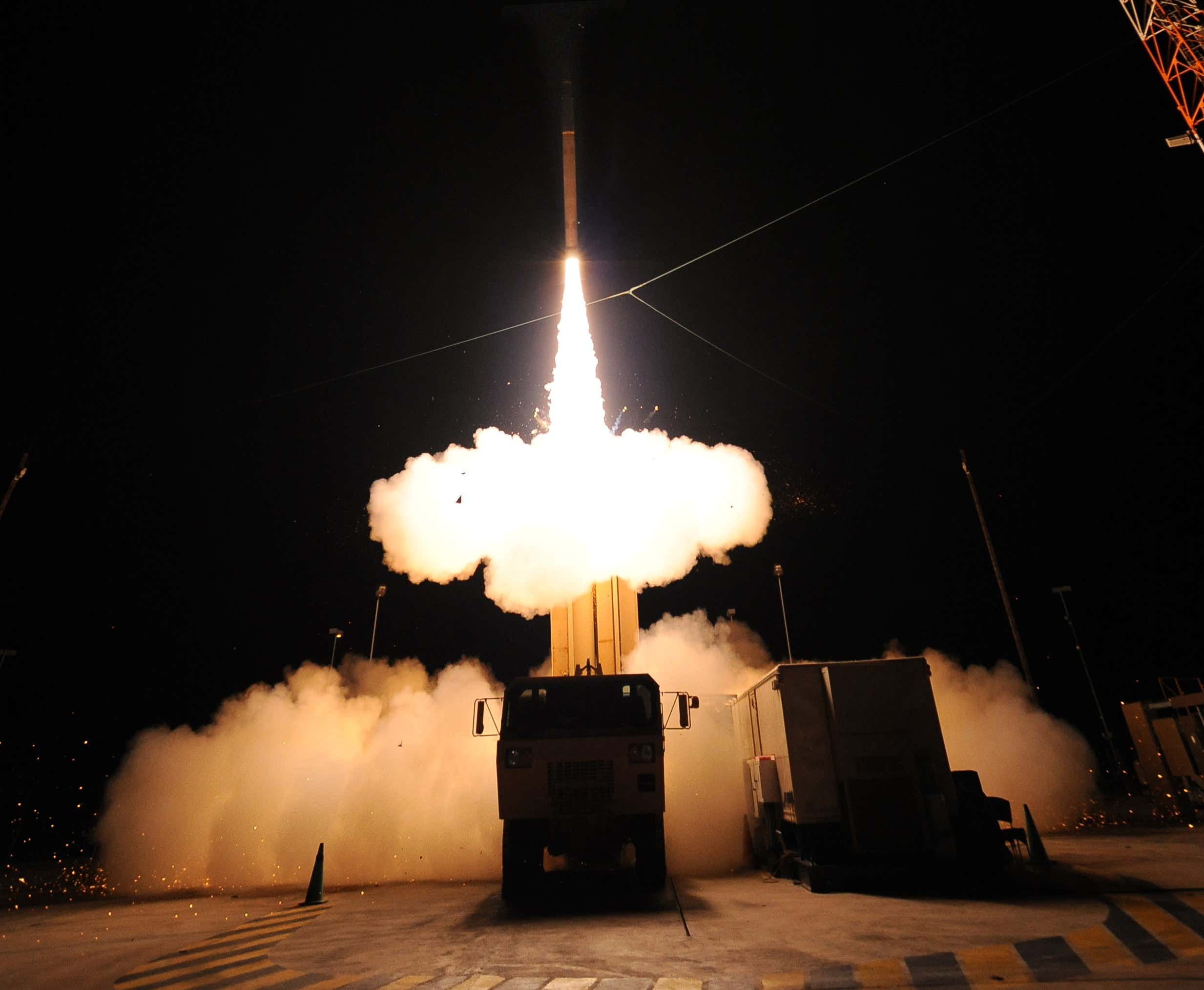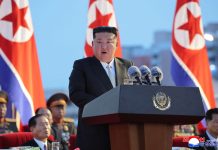The UAE claims to have intercepted and destroyed a ballistic missile fired by the Iran-backed Houthi rebels during the Israeli President’s visit to the country. The incident comes days after the UAE became the first country to use the US-built Terminal High Altitude Area Defense (THAAD) system in combat.
The fragments of the missile intercepted by the Emirati air defense at 00.20 UAE times (January 31) fell in an unpopulated area, according to the Defense Ministry. There has been no report of any injuries or damage so far.
Air traffic movement is continuing normal and all flights are operating as usual, the UAE General Civil Aviation Authority said later on January 31.
Following the attack, the Saudi-led coalition fighting the Houthis in Yemen stated that a ballistic missile launchpad had been destroyed in Yemen’s al-Jawf Governorate. The Emirati Defense Ministry posted a video of the launchpad attack on social media.
UAE MOD Joint Operations Command announces at 00:50 UAE time the destruction of platform for ballistic missile launched from Al-Jawf, Yemen towards UAE. Missile was intercepted at 00:20 by air defences. Video of successful destruction of missile platform and launch site pic.twitter.com/CY1AoAzfrp
— وزارة الدفاع |MOD UAE (@modgovae) January 30, 2022
UAE’s air defenses were reportedly activated immediately after the Houthis declared that they would be revealing details of a large-scale military operation “in the depths of the UAE”.
On January 31 morning, the Houthis claimed responsibility for the attack, calling it the “Third Hurricane of Yemen Operation”. Hurricane of Yemen was also the name of the other two recent Houthi strikes on the UAE.
Given the fact that only one ballistic missile was intercepted over the UAE overnight, Houthi military spokesperson Yahya Saree asserted that the rebels had unleashed a number of ballistic missiles and drones targeting Abu Dhabi and Dubai.
Israeli President Isaac Herzog and his entourage have been informed of the event and are safe. The visit is intended to proceed as scheduled. During the tour, Herzog stated that Israel supports the UAE’s security requirements and aspires to strengthen regional ties.
According to the Israeli leader’s office, Herzog informed Crown Prince Sheikh Mohammed bin Zayed Al Nahyan, the de facto Emirati leader, “We completely support your security requirements and we condemn any attack on your sovereignty in all forms and language.”
The US State Department has also strongly criticized the Houthi attack during Herzog’s visit to Abu Dhabi. “While Israel’s president is visiting the UAE to build bridges and promote stability across the region, the Houthis continue to launch attacks that threaten civilians,” USA’s State Department spokesperson Ned Price tweeted.
We condemn the latest Houthi missile attack on Abu Dhabi. While Israel’s president is visiting the UAE to build bridges and promote stability across the region, the Houthis continue to launch attacks that threaten civilians.
— Ned Price (@StateDeptSpox) January 31, 2022
The Abraham Accords, brokered by the US, cemented relations between Israel and the UAE in 2020, bringing over a decade of secret contacts into the open, and their relationship has flourished since then.
The latest visit of the Israeli President would further improve bilateral ties. Many wondered about Iran’s complicity in recent violent incidents. The Houthis have a different connection with Iran than other proxies since they regard themselves as partners with the Islamic Republic.
The UN has accused Iran of violating the arms embargo in Yemen by supplying a variety of weapons to its Shiite allies in the Houthis. Houthi interests are strongly aligned with Iran.
It’s not just rockets that are getting through the blockade’s loopholes. Tehran has also delivered a large number of individual parts, which are more difficult to track and may or may not be subject to UN sanctions, according to reports. These components are generally utilized to put together drones like the ones that attacked the UAE and are completely revamping combat in the Middle East.

After the attack on UAE on January 17, a Houthi delegation met with Iranian President Ebrahim Raisi in Tehran to discuss the conflict in Yemen even as negotiations continued in Vienna to restore the 2015 Iran nuclear deal.
UAE Strengthen Air Defenses
On January 17, an Emirati THAAD system intercepted a mid-range ballistic missile aimed at an oil facility near the Al-Dhafra Air Base in Abu Dhabi. This was the first successful operational use of the American-made system in combat.
The UAE was the first international customer of THAAD when it bought these systems including 48 missiles, nine transporter-erector-launcher vehicles (TELs), and two radars as part of a $1.135 billion contract with the US.
In 2015, the UAE acquired its first THAAD interceptors. It then continued to establish a facility along the Persian Gulf coastline that is strategically positioned to counter threats from Iran.

The attack on January 17, which included drones and possibly cruise missiles, was unprecedented and serves as yet another reminder of the magnitude of the threat that now exists in the Middle East. Three civilians were killed and six injured in the attack.
In addition to the THAAD air defense system, the UAE also operates MIM-104 Patriot PAC-3 systems and Russian-built medium-range Pantsir-S1s. On January 24, the US military assisted the UAE in shooting down two more Houthi missiles aimed at Al Dhafra with the help of multiple Patriot interceptors.

Last year, it was reported that the US removed its most advanced missile defense system and Patriot batteries from the Middle East notably from Saudi Arabia, even as the region continued to face air attacks from Yemen’s Houthi rebels. The UAE is still enhancing its air defense systems.
The day before the unusual attack on Abu Dhabi on January 17, Emirati Prime Minister Mohammed bin Rashid Al Maktoum met with South Korean President Moon Jae-in in Dubai and inked a $3.5 billion contract for Cheongung II KM-SAM air defense systems, which is manufactured in South Korea.
- Contact the author at ashishmichel@gmail.com
- Follow EurAsian Times on Google News




